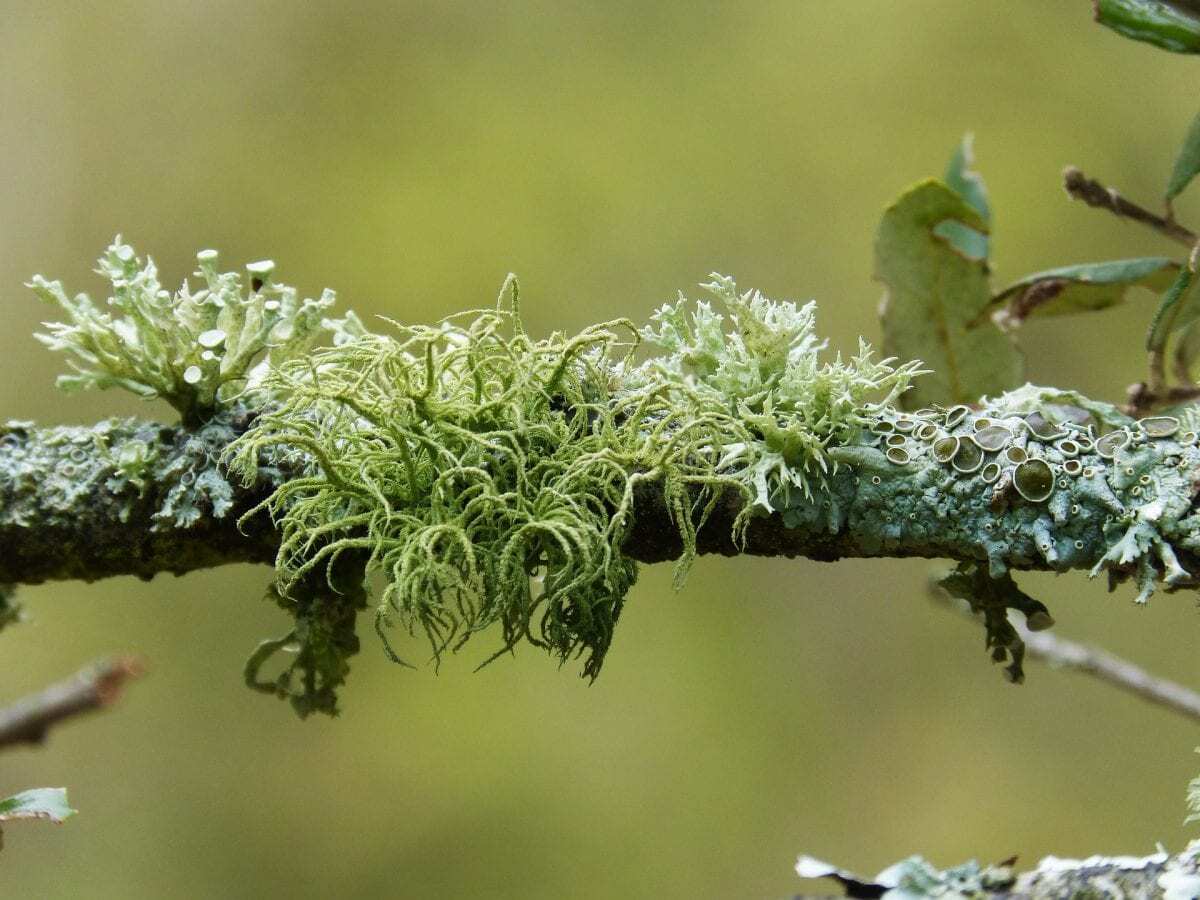When an asteroid smacked into the Earth 66 million years ago, it triggered mass extinctions all over the planet.
The most famous victims were the dinosaurs, but early birds, insects, and other life forms took a hit too. The collision caused clouds of ash to block the sun and cool the planet’s temperature, devastating plant life. But a new study in Scientific Reports shows that while land plants struggled, some kinds of lichens–organisms made of fungi and algae living together–seized the moment and evolved into new forms to take up plants’ role in the ecosystem.
“We thought that lichens would be affected negatively, but in the three groups we looked at, they seized the chance and diversified rapidly,” says Jen-Pang Huang, the paper’s first author, a former postdoctoral researcher at the Field Museum now at Academia Sinica in Taipei. “Some lichens grow sophisticated 3D structures like plant leaves, and these ones filled the niches of plants that died out.”
The researchers got interested in studying the effects of the mass extinction on lichens after reading a paper about how the asteroid strike also caused many species of early birds to go extinct. “I read it on the train, and I thought, ‘My god, the poor lichens, they must have suffered too, how can we trace what happened to them?'” says Thorsten Lumbsch, senior author on the study and the Field Museum’s curator of lichenized fungi.
You’ve seen lichens a million times, even if you didn’t realize it. “Lichens are everywhere,” says Huang. “If you go on a walk in the city, the rough spots or gray spots you see on rocks or walls or trees, those are common crust lichens. On the ground, they sometimes look like chewing gum. And if you go into a more pristine forest, you can find orange, yellow, and vivid violet colors–lichens are really pretty.” They’re what scientists call “symbiotic organisms”–they’re made up of two different life forms sharing one body and working together. They’re a partnership between a fungus and an organism that can perform photosynthesis, making energy from sunlight–either a tiny algae plant, or a special kind of blue-green bacterium. Fungi, which include mushrooms and molds, are on their own branch on the tree of life, separate from plants and animals (and actually more closely related to us than to plants). The main role of fungi is to break down decomposing material.
During the mass extinction 66 million years ago, plants suffered since ash from the asteroid blocked out sunlight and lowered temperatures. But the mass extinction seemed to be a good thing for fungi–they don’t rely on sunlight for food and just need lots of dead stuff, and the fossil record shows an increase in fungal spores at this time. Since lichens contain a plant and a fungus, scientists wondered whether they were affected negatively like a plant or positively like a fungus.
“We originally expected lichens to be affected in a negative way, since they contain green things that need light,” says Huang.
To see how lichens were affected by the mass extinction, the scientists had to get creative–there aren’t many fossil lichens from that time frame. But while the researchers didn’t have lichen fossils, they did have lots of modern lichen DNA.
From observing fungi growing in lab settings, scientists know generally how often genetic mutations show up in fungal DNA–how frequently a letter in the DNA sequence accidentally gets switched during the DNA copying process. That’s called the mutation rate. And if you know the mutation rate, if you compare the DNA sequences of two different species, you can generally extrapolate how long ago they must have had a common ancestor with the same DNA.
The researchers fed DNA sequences of three families of lichens into a software program that compared their DNA and figured out what their family tree must look like, including estimates of how long ago it branched into the groups we see today. They bolstered this information with the few lichen fossils they did have, from 100 and 400 million years ago. And the results pointed to a lichen boom after 66 million years ago, at least for some of the leafier lichen families.
“Some groups don’t show a change, so they didn’t suffer or benefit from the changes to the environment,” says Lumbsch, who in addition to his work on lichens is the Vice President of Science and Education at the Field. “Some lichens went extinct, and the leafy macrolichens filled those niches. I was really happy when I saw that not all the lichens suffered.”
The results underline how profoundly the natural world we know today was shaped by this mass extinction. “If you could go back 40 million years, the most prominent groups in vegetation, birds, fungi–they’d be more similar to what you see now than what you’d see 70 million years ago,” says Lumbsch. “Most of what we see around us nowadays in nature originated after the dinosaurs.”
And since this study shows how lichens responded to mass extinction 66 million years ago, it could shed light on how species will respond to the mass extinction the planet is currently undergoing. “Before we lose the world’s biodiversity, we should document it, because we don’t know when we’ll need it,” says Huang. “Lichens are environmental indicators–by simply doing a biodiversity study, we can infer air quality and pollution levels.”
Beyond the potential implications in understanding environmental impacts and mass extinctions, the researchers point to the ways the study deepens our understanding of the world around us.
“For me, it’s fascinating because you would not be able to do this without large molecular datasets. This would have been impossible ten years ago,” says Lumbsch. “It’s another piece to the puzzle to understanding what’s around us in nature.”
“We expect a lot of patterns from studying other organisms, but fungi don’t follow the pattern. Fungi are weird,” says Huang. “They’re really unpredictable, really diverse, really fun.”
Header Image – Public Domain CC





